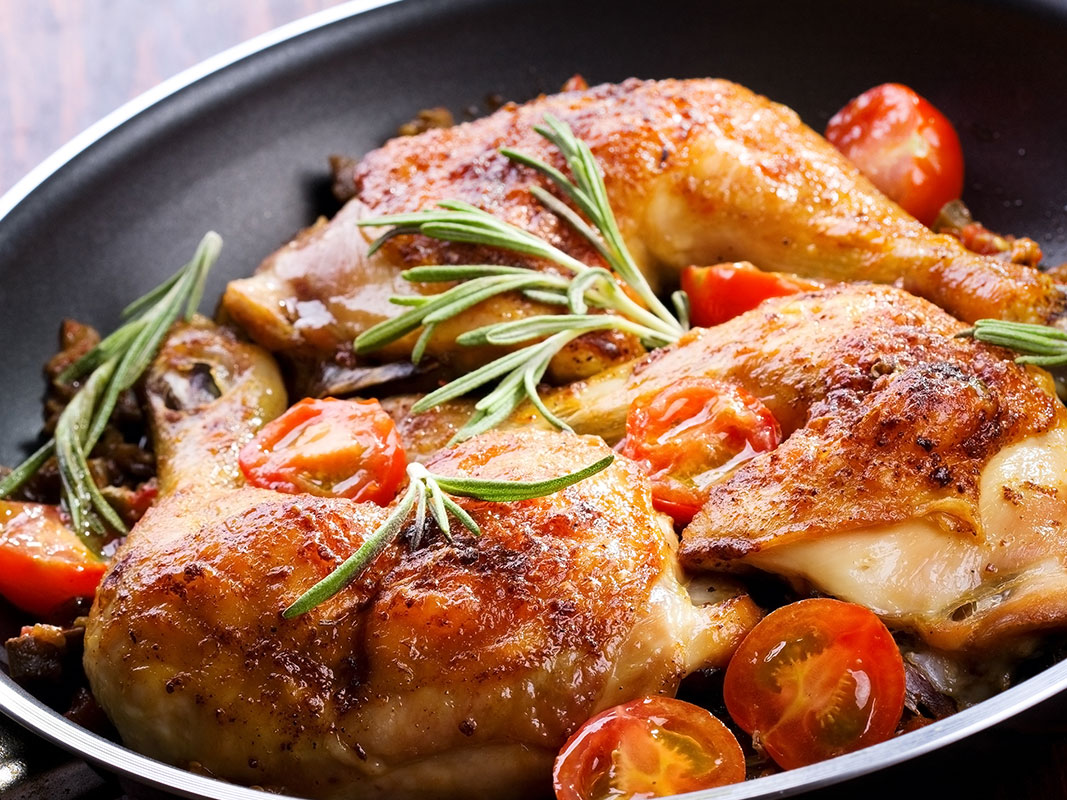Having a ravishing roast for dinner with family is one of the best possible ways to enjoy a non-vegetarian lifestyle. With every bite oozing with intoxicating flavours and juicy goodness, it’s hard not to fall in love with a great lamb or chicken roast. Let’s explore the process of roasting today.
Roasting is a dry heat method that may use a small amount of fat or oil as a baste. The meat is cooked in an oven or on a rotating spit over a fire, gas flame or electric grill bars.
Different roasting methods
Some meat cuts suit high temperature roasting while others are better roasted at low temperatures.
Joints with fat cover – lamb cuts with plenty of outer fat cover, fat seams or marbling are best roasted at low to moderate temperatures. This results in less shrinkage and better serving yields.
Very lean or totally trimmed cuts are better rare-roasted at higher temperatures, or first seared then roasted.
Slow roast: low temperature, under 160°C (but above 100° C).
Moderate roasting temperature, 170° to 180° C.
Fast roast: high temperature, 200° C or over.
Sear then roast: brush lean surfaces with oil. Brown meat all over in a hot, dry pan then transfer to moderate oven, 180° C, to complete cooking.
Roasting tips for top results
If possible, take meat from refrigerator about 30 minutes before cooking.
Trim excess fat and silverskin if necessary.
For very lean cuts, sear or brown – the lean cuts first. Pre-searing a roasting cut in a hot pan improves colour and flavour, particularly when using small, very lean lamb cuts that need only short cooking.
Roast on a rack: When practical, place meat on a rack to roast. This allows even heat circulation and browning.
Self-basting: Roast lamb with fat side uppermost to allow natural basting.
Netting and trussing: Collagen film, netting or twine may be used to hold plain or filled roast cuts in an even shape for cooking, portioning and carving.
Resting after roasting: After cooking, before carving or serving chicken or lamb, allow meat to rest, approximately 5 minutes for every 500 g meat. For example: 15 minutes for a 1.5 kg chicken roast. Resting enables temperature to even out, the meat fibres to relax and reabsorb some of the juices. The relaxed meat becomes more tender and easier to carve with less loss of juices
Remember that the internal temperature will continue to rise after the meat is removed from the oven or pan, and for a time during resting. This transference of heat can change the internal temperature of a small joint by 2-4 degrees C after 5 to 10 minutes. And in larger joints, the internal core temperature can rise from 4-10 degrees C after 15 to 20 minutes.
Therefore, allowing for this “carry-over” cooking, roast meat can be cooked to about 5degrees C below the desired degree of doneness.


Pingback: Licious – Blog